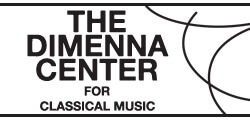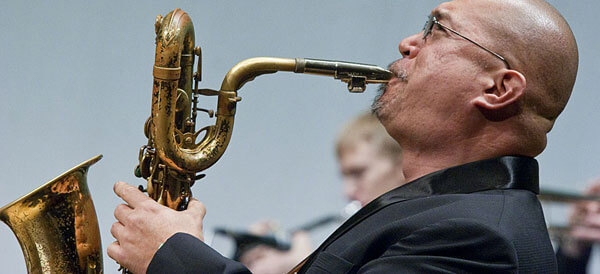

Cellist Seth Woods
My initial reason for attending that evening was the one duet on the program: composed by and performed with baritone saxophonist Fred Ho. It did not disappoint, and proved to be a raucous journey of ill grooves, solo explorations on both instruments, and some great imitative moments. The latter came in the form of thumping plucking on the cello and popping “slap-tongue” (the saxophone’s version of pizzicato). In addition, excursions throughout the range of both instruments brought out their similarities, particularly with Fred Ho’s occasional use of a more sensitive timbre in the bari’s upper register. Woods and Ho could be locked in step together one second and then venture off into exuberant spontaneity the next, keeping the audience at the edge of their seats the whole time. Nothing was held back, and I can only hope that a good recording was made since musical conversations like this can never be repeated, even if all the notes are written down. The title of the piece, Burning Sister: The Fire This Time!, was appropriate as the sonic exploration brought to life Fred Ho’s continued commitment, even with his recent battle against cancer, to push music and oppositional politics in ever more radical directions.

Baritone Saxophonist Fred Ho (photo credit: Jill Foley, Harvard University)
Woods’s selections for the rest of the program were wise choices, each presenting a new world of sounds and ideas. Edward Hamel’s Gray Neon Life, composed this year, utilized plenty of harmonics and pitch slides. While these techniques get used in gimmicky ways a lot nowadays, in this case I found them to be compelling and intuitive, unfolding in a way that opened up my ears to all the nuances of possibilities with these techniques. Hamel added fragmented tag phrases from the old-school graffiti crew SAMO for the performer to whisper that were contradictory statements on art and modern life. This combined with the sonic effects of the harmonics succeeded in creating something of an “urban” effect (though don’t ask me to explain how—you had to be there).
Claudio Gabriele’s PNOM slowly and softly brought me into its somewhat elusive ideas. At times, moments of lyrical melody with a near-brooding quality came to the surface. Woods’s tremolos and harmonics in this piece almost sounded electronic, demonstrating his capability to draw so many different sounds out of his cello. The bare and barren quality of PNOM was an excellent contrast to Gilbert Galindo’s Canticum Antiquum with its live electronic sound processing. This work filled the room with plenty of echo to boot. The ventures into the cello’s lower register had a chugging effect almost as though it were a metal band. In this composition, Galindo has managed to find a way to take the solo cello and transform it into an exponentially greater sound mass without losing the instrument in the process. I was especially impressed that within the wall of sound, Woods pulled out a lot of beauty, pure tone, and even a little lyricism—a testament to his detailed sensitivity as a performer.
The closer, Anton Lukoszevieze’s American Poets and Cello was one of those enchanting and meditative pieces that I am still having trouble describing in words. With pre-recorded background, Woods developed the musical ideas in ways that flowed together and kept exploring new ground. This piece especially, and the recital as a whole, left me in a deeply contemplative mood that took a few days to fully subside. Indeed, it has taken me quite some time to write a review of the concert exactly because the performance and the compositions were so full of depth. This was one of those concerts that I experienced more than listened to. I am impressed with the mature artistry and willingness to go to the brink that Seth Woods exemplified in his selections and performance. I hope this program and others like it can be experienced by more people in the future.
–
David Pearson is a saxophonist residing in NYC and a doctoral candidate in musicology at CUNY Graduate Center.

